Causes Symptoms Diagnostics Treatment Our advantages Prices

Amblyopia is called one - or bilateral decrease in vision, which is not related to an organic change of the visual analyzer. A distinctive feature of amblyopia is the inability of its optical correction. The disease can be completely asymptomatic or be accompanied by such facts as inability of fixation of gaze, impaired colour perception and spatial orientation, decreased visual acuity (from a slight weakening to light perception).
At amblyopia, also known as "lazy eye" syndrome, one eye partially or fully is excluded of the visual process. In ophthalmology it is regarded as one of the major causes of unilateral visual loss. According to statistics, the disease affects about 2% of the world population. Amblyopia, as a rule, occurs at children's age, and that is why its early identification and correction of the disease is very important.
Causes and types of amblyopia
 Various types of amblyopia are caused by many reasons.
Various types of amblyopia are caused by many reasons.
Cause of strabismic amblyopia is monolateral concomitant strabismus at which, the eye deviated from participation in the act of vision is excluded. At strabismus, amblyopia occurs in the squinting eye. To prevent diplopia, the brain ceases to perceive the image that comes from the squinting eye, and, over time, this leads to interruption of conduction of impulses from the retina of the deviated eye to the visual cortex. Thus, a vicious circle is formed: strabismus, on the one hand, is the reason of strabismic amblyopia and the development of amblyopia worsens strabismus.
Obscure amblyopia, commonly occurs due to corneal opacity (leukoma), congenital cataract, ptosis of the upper eyelid, degeneration and injuries of the cornea, significant changes of the vitreous body, hemophthalmus.
The basis of anisometropic amblyopia is not corrected anisometropia of high degree: amblyopia in this case occurs on the eye with more severe refractive violations. Causes of anisometropia, in turn, can be significant degrees of myopia (>8 D bilateral), hyperopia (> 5 D bilateral), astigmatism (>2,5 D in any meridian).
At refractive amblyopia, the cause lies in long-term absence of myopia, hyperopia or astigmatism correction. Such amblyopia may develop when the following differences in the refraction of both eyes: astigmatic - more than 1,5 D, myopic – more than 2,0 D, hyperopic - more than 0,5 D.
Hysterical amblyopia is caused by unfavourable factors of psychogenic nature, accompanied by psychosis and hysteria. Therefore develops either unilateral, or bilateral disturbance of vision, disturbance of color perception, concentric constriction of visual fields, photophobia and other functional disorders.
Group of risk for the development of the disease include infants born through premature birth (with a serious degree of prematurity) with burdened perinatal history, with delays of mental development, and with a family history of amblyopia or strabismus. The disease is accompanied by a number of hereditary abnormalities - Behcet's syndrome, Kaufman syndrome, ophthalmoplegia with ptosis and miosis.
Degrees of amblyopia
Currently, there are five degrees of amblyopia, depending on the deterioration of visual acuity:
- I degree - very faint amblyopia, visual acuity 0,8-0,9.
- II degree - mild amblyopia, visual acuity of 0,5-0,7.
- III degree - average amblyopia, visual acuity of 0,3-0,4.
- IV degree - strong amblyopia, visual acuity 0,05 to 0,2.
- V degree - very strong amblyopia, visual acuity less than 0,05.
Symptoms of amblyopia

Each form of amblyopia has its own expression. Weak degree of the disease is sometimes asymptomatic.
Children, due to lack of sensory experience, can not assess whether they can see clearly and if both eyes are equally involved in the visual process. A child might be having amblyopia in the presence of strabismus or nystagmus, as well as the impossibility to fix the gaze on the bright object. In older children, amblyopia is indicated by decrease of visual acuity, with no improvement of its correction, a violation of orientation in an unfamiliar place, some deviation of one eye to the side, a habit of covering one eye when looking at an object or reading, tilt or turn of the head when looking at the item of interest, disturbance of color perception and darkness adaptation.
In adults hysterical amblyopia is often developed on the basis of serious emotional trauma, which is characterized by a sudden reduction of vision, which lasts for several hours or even a few months.
At amblyopia, visual impairments vary from slight reduction to almost complete vision loss (light perception) with the impossibility of visual fixation.
Diagnostics of the disease

For detection of amblyopia is always held a range of ophthalmic examinations. At the initial examination, the ophthalmologist inspects condition of the eyelids, palpebral fissure, pays attention to the eyeball position and determines the pupillary reaction to light.
General information about visual condition can be obtained by ophthalmic tests such as visual acuity examination without correction, clarification of colour perception, perimetry, refraction testings. The severity of amblyopia depends on the degree of visual acuity reduction.
For examination of the ocular structures at amblyopia, ophthalmoscopy, biomicroscopy, ocular fundus examination with the use of the Goldmann lens is held. The transparency of the refractive areas is determined by inspection of the eye in transmitted light. If these areas (crystalline lens, vitreous body) are opaque, its condition is assessed on an ultrasound.
The most important of biometric studies is determination of strabismus degree, for which Hirschberg test is carried out, as well as measurement of strabismus angle with the help of synoptophore. To exclude anisometropic and refractive amblyopia are prescribed refraction studies with skiascopy and refractometry.
Comprehensive examination of patients with amblyopia may also include tonometry and electroretinography; if necessary, consultation of a neurologist must be provided.
Treatment of amblyopia
Only individually selected, early and persistent treatment of amblyopia will give positive results. Correction of amblyopia should be performed as the child reaches 6-7 years old, after this age, amblyopia in children is almost impossible to cure.
The success of amblyopia correction depends on the elimination of its cause. So, obscure amblyopia is cured by cataract surgery, surgical correction of ptosis, absorbable therapy or vitrectomy of hemophthalmus. When strabismic amblyopia, surgical correction of strabismus is performed.
To treat refractive and anisometropic amblyopia, conservative methods are used. At first stage of treatment is prescribed adequate correction of vision, with selection of glasses, night orthokeratology or contact lenses, anisometropia is eliminated by laser correction.
After about three weeks, pleoptic treatment begins, the goal of which is elimination of a dominant position of a better seeing eye and activation of functions of an eye with amblyopia. For treatment of the disease is used, both active and passive pleoptics.
Passive pleoptics is the covering (occlusion) of the leading eye and active pleoptics combines the occlusion of the leading eye and stimulation of the affected eye retina with light and electric pulses of special computer programs. Most effective are considered exercises on hardware devices, laser stimulation, electric stimulation, electromagnetic stimulation, light and color stimulation, vibrostimulation, reflexology stimulation, special computer programs, etc. Pleoptics courses in amblyopia should be repeated at least 3-4 times a year.
For younger children in treatment of amblyopia is applied penalization – purposeful deterioration of vision in leading eye by its overcorrection or instillation of atropine. Visual acuity of the dominant eye in this case is reduced, which contributes to the revitalization of the eye with amblyopia. In this disease are effective methods of physiotherapy – vibrating massage, reflexology stimulation, medicinal electrophoresis.
After pleoptic treatment stage is complete, binocular vision restoration is started by orthoptic treatment. This stage can be started when the visual acuity of both eyes is not less than 0,4 D and the child reaches the age of 4 years. Usually the device Synoptophore is used for this purpose. Looking in its eyepieces, the patient sees scattered pieces of a single image that have to be combined into a holistic picture with some visual effort. We also use monobioscope MBS-02 in our clinic for hardware treatment of amblyopia.
Laser therapy device called "Speckle-M" can also be applied, with its use is generated therapeutic glare of the retina by red or white light of laser, which has a releasing effect and leads to improvement of visual acuity and correction of fixation of the amblyopic eye.
In addition, excellent results are achieved by use of sets for recovery of binocular vision "Rainbow" and "Mosaic". With the help of "Rainbow" is possible training of combining fields of vision (convergence), and with the use of "Mosaic" the eye is stimulated by light flow (pattern stimulation). Both sets are made in the form of entertaining games for children, which makes the exercising interesting and exciting.
The main goal of amblyopia treatment is to achieve approximately the same visual acuity in both eyes. In hysterical amblyopia should be prescribed sedatives and recommended psychotherapist help.
Prediction and prevention of the disease
The prognosis of amblyopia always depends on the causes and time of detection and initiation of treatment of the disease. The sooner the correction is applied, the better the results will be. The greatest effect is achieved if the treatment is held in children up to the age of 7, when the formation of the eye is not completed. With timely and comprehensive treatment of amblyopia, as a rule, we manage to almost completely normalize vision. Amblyopia in adulthood have a lasting and irreversible reduction of visual acuity.
Prevention of amblyopia is achieved by regular surveys of children, which should start at 1 month of baby's life. When opacities in the optical area of the eye, ptosis, nystagmus or strabismus are detected, it requires early elimination of defects. A lasting effect of amblyopia treatment is achieved by passing a full course of treatment and exact adherence to the prescriptions of an ophthalmologist (eye glasses, occluders, regular checkups).
Our advantages
Moscow Eye Clinic offers comprehensive diagnostics and effective treatment of various eye diseases. The most modern equipment and high professional level of working in the clinic specialists preclude diagnostic errors.
Due to the examination results every patient will be provided with recommendations on choosing the most effective treatment of diagnosed eye pathologies. Turning to Moscow Eye Clinic, you can be sure to get a swift and accurate diagnostics and effective treatment.
The highest level of theoretical training and extensive practical experience of our experts guarantee the best results of treatment.

Prices for treatment of amblyopia
The cost of amblyopia treatment in Moscow Eye Clinic is calculated individually and will depend on the amount of performed therapeutic and diagnostic procedures. Our prices are affordable, the cost of amblyopia hardware treatment starts from 200 rubles per session ("Rainbow" + "Mosaic" 1 procedure).
Prices for all types of hardware treatment in our clinic can be found here.
You can ask our experts any questions you have by phone in Moscow: 8 (800) 777-38 81 and (499) 322-36-36 (daily from 9:00am to 9:00pm) or online by using appropriate form on the website.


 Semenovskaya
Semenovskaya 










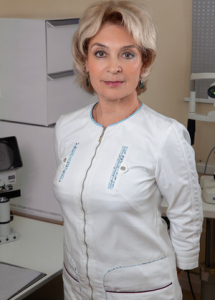

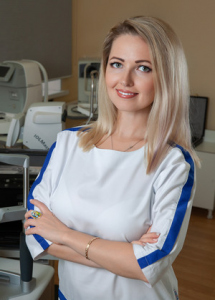
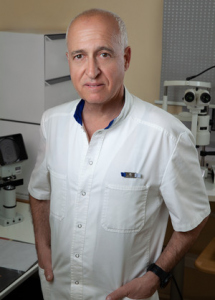

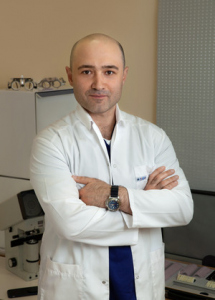

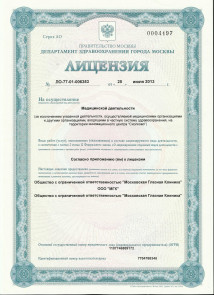

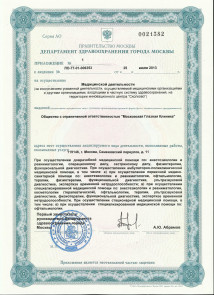

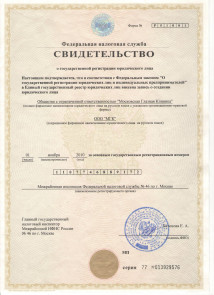
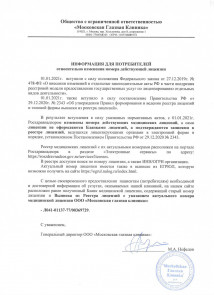

_214x295_ead.jpg)